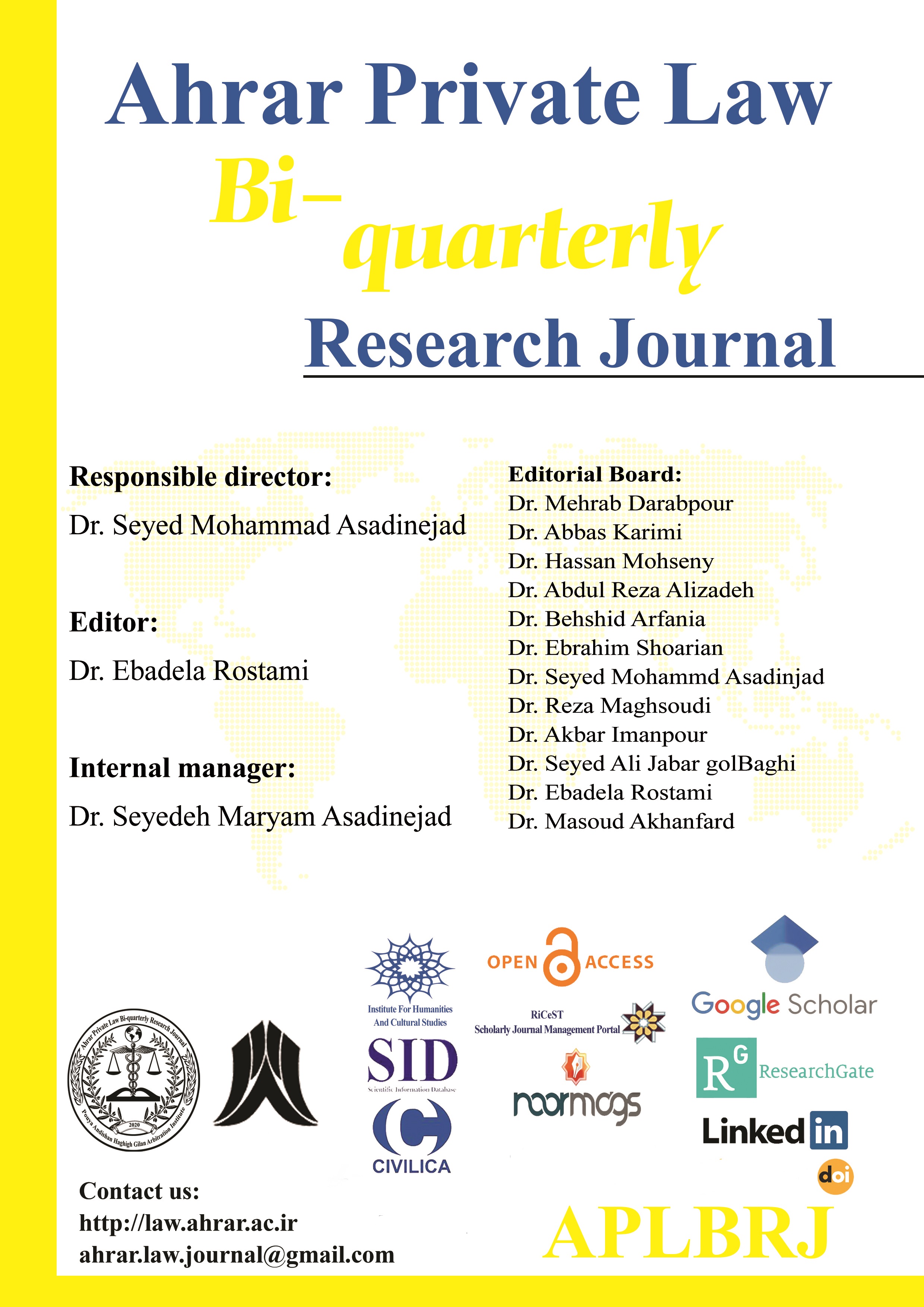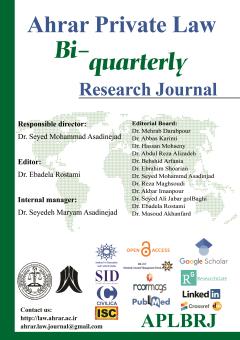-
-
-
Open Access Article
1 - Consumer rights of food products
Mahvash Abolghasem kashanimanufacturers produce unhealthy and defected works that not only wastes our resources but also makes a poor economy that leave us in a vulnerable state in this ever-Due to the uncompetitive economic status of our country, some food developing world. The most important m Moremanufacturers produce unhealthy and defected works that not only wastes our resources but also makes a poor economy that leave us in a vulnerable state in this ever-Due to the uncompetitive economic status of our country, some food developing world. The most important matter to be considered is that it inflicts damage on the community health, while it distorts the public discipline and change the balance between production and consumption. Introduction of basic customer rights across Europe, triggered formulation of a special law for protecting customers in Iran. However, it is imperfect due to the ambiguous method of compensating for losses. Hence, based on the principle of no harm, this essay tends both to find a legally protective umbrella for customers and develop a robust economy as a remedy for the inefficient laws enacted regarding civil liability and protecting customers against the complications of market. For this purpose, this essay introduces a food manufacturer as a sufficient and primary cause that inflict harm, and specifies that the manufacturer’s failure plays role only in ascertaining of the causal link; It also set asides the liability resulting from food production failures and substitute it with manufacturers’ sense of responsibility for the final results , safety assurance, and a perfect responsibility based on legal and jurisprudential principles. Manuscript profile -
Open Access Article
2 - Legal Effects of Gamete Transfer Contracts (Egg and Sperm)
seyyedeh maryam asadinejadNowadays, many infertile couples around the world have become parents through assisted reproductive technologies. In this study, we aim to examine the jurisprudential and legal aspects of artificial insemination, as our legal system is rooted in jurisprudence and withou MoreNowadays, many infertile couples around the world have become parents through assisted reproductive technologies. In this study, we aim to examine the jurisprudential and legal aspects of artificial insemination, as our legal system is rooted in jurisprudence and without addressing its fundamental principles, it becomes difficult to establish legal rights for them. Therefore, in the jurisprudential examination, we first address the issue of permissibility or prohibition of using these artificial insemination methods, and then examine the legal status of these methods that determine the lineage of these children, and finally discuss the legal rights and obligations of the parties involved in the artificial insemination contract, as determining the child's lineage will clarify other issues such as custody and guardianship. New fertility or artificial insemination is a therapeutic approach that was developed in the late twentieth century to treat infertility in couples. This therapeutic method began in 1765 and eventually led to the treatment of infertility in humans, and among the methods used in this regard is the use of a surrogate or second husband's womb to place the fetus for growth until the moment of birth. Manuscript profile
List of Articles باروری.
-
The rights to this website are owned by the Raimag Press Management System.
Copyright © 2017-2024


